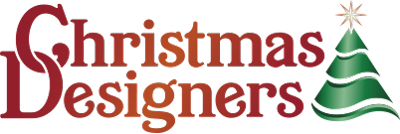From Edison to LED - The Complete History of Christmas Lights
1184: The light of Christmas takes shape

Hauling a Yule log at Christmas, 1832
For centuries, light has been used to represent wintertime festivities. Beginning with the medieval pagan celebration of Yule which marked the Winter solstice, the earliest recorded date of which is 1184 (although it may have been much earlier), the light of a burning Yule log was used to represent the light which warded off the evil spirits of the world during the long winter nights Later, Christianity would incorporate Yule traditions into Christian festivities, lighting up Yule logs on Christmas Eve until as recently as the 19th century. A similar tradition of light as an important part of Wintertime traditions can be seen echoed in various Christian Christmastime traditions including Candlemas, Christingle, and Luminaria.1660: Candle-lit Christmas trees are born
 Steel engraving of Martin Luther's Christmas Tree, from Sartain's Magazine, circa 1860.
Steel engraving of Martin Luther's Christmas Tree, from Sartain's Magazine, circa 1860.
1846: Queen Victoria and Prince Albert make candle-lit Christmas trees popular

Victoria and Albert gathered around the Christmas tree with their children.
Victoria and Albert gathered around the Christmas tree with their children. Between the time Follen decorated the first Christmas tree with candles in the U.S. and Arts created the clip-on candle holder, across the pond the royal family consisting of then Queen Victoria and husband Prince Albert were illustrated as gathering around a candle-lit Christmas tree in the London news. As expected, this created quite a craze and made candle-lit Christmas trees wildly popular in the U.K. An edited version of this illustration eventually made its way to the U.S. and further influenced the states to adopt the practice.1879: Edison invents first string lights

Thomas Edison's first public demonstration of incandescent lighting in 1879.
In 1879, Edison finalized the world’s first long-lasting carbon filament lamps, which he used to light up his laboratory in Menlo Park, New Jersey on New Year’s Eve of that year. But Edison wasn’t just trying to fill others with the holiday spirit, his light show was actually a bid to win a contract to power all of Manhattan with electricity. In the same way, commercial businesses have continued to use Christmas lights to drive customers during the holiday season to the present day.1882: Edward H. Johnson decorates the first electric-lit Christmas tree
 The first electric light Christmas tree, 1882.
The first electric light Christmas tree, 1882.
1895: Christmas lights enter the White House
 The White House Christmas tree in 1899, just before Roosevelt took office.
The White House Christmas tree in 1899, just before Roosevelt took office.
1903: General Electric sells the first Christmas light kits
 Early 1900s ad featuring General Electric Christmas lights.
Early 1900s ad featuring General Electric Christmas lights.
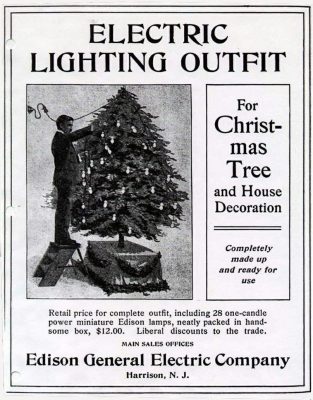 Original G.E. ad for their 'then' new Electric Lighting Outfit. The lights cost $12.00 to rent. That would be more than $300 in today's dollars.
Original G.E. ad for their 'then' new Electric Lighting Outfit. The lights cost $12.00 to rent. That would be more than $300 in today's dollars.
1919: GE introduces the flame-shaped MAZDA lamp
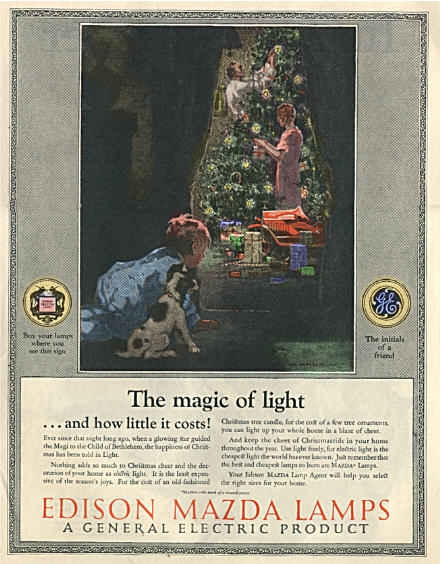 A 1920s ad from G.E for their MAZDA Lamps.
A 1920s ad from G.E for their MAZDA Lamps.
1920: The First Outdoor Christmas Light Show
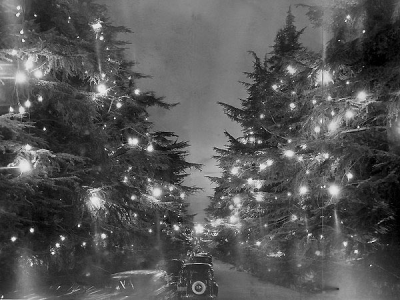 Christmas Tree Lane and the colorful lights of the Balian Mansion.
Christmas Tree Lane and the colorful lights of the Balian Mansion.
 One of the several signs indicating Christmas Tree Lane as a California State Landmark.
One of the several signs indicating Christmas Tree Lane as a California State Landmark.
1925: First widespread commercial sales of Christmas lights
 Original NOMA Christmas Lites shown above.
Original NOMA Christmas Lites shown above.
1946: NOMA debuts new bubble lights
 Yes, before you ask those are bubbles inside of a Christmas light. In 1946, NOMA brought what was called the “bubble light” from the U.K. to the U.S. with an American patent. Within the plastic light casing, methylene chloride was heated to a very low boiling point, just enough to where it would visibly bubble through the plastic casing, hence the “bubble” light.
Despite the odd and somewhat gimmicky nature of the bubble light it swept the country and was incredibly popular for its time. We’re mesmerized!
Yes, before you ask those are bubbles inside of a Christmas light. In 1946, NOMA brought what was called the “bubble light” from the U.K. to the U.S. with an American patent. Within the plastic light casing, methylene chloride was heated to a very low boiling point, just enough to where it would visibly bubble through the plastic casing, hence the “bubble” light.
Despite the odd and somewhat gimmicky nature of the bubble light it swept the country and was incredibly popular for its time. We’re mesmerized!
1950s: The aluminum Christmas tree phase
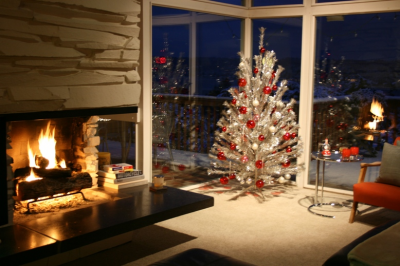 With the 1950s Space Age came the advent, and resulting popularity, of the aluminum Christmas tree. A tree that was fireproof (finally!), never died nor needed water, and offered a space-age feel was too good to pass up.
Why was this significant? Because aluminum acts as a conductor, meaning Christmas lights couldn’t be placed on them. Instead of lights on the tree itself, people would use an illuminated color wheel like the one below. The wheel would spin around, illuminating the tree’s surface and making it appear as if it were lit:
With the 1950s Space Age came the advent, and resulting popularity, of the aluminum Christmas tree. A tree that was fireproof (finally!), never died nor needed water, and offered a space-age feel was too good to pass up.
Why was this significant? Because aluminum acts as a conductor, meaning Christmas lights couldn’t be placed on them. Instead of lights on the tree itself, people would use an illuminated color wheel like the one below. The wheel would spin around, illuminating the tree’s surface and making it appear as if it were lit:
 Harmony House Roto-Wheels were used to illuminate aluminum Christmas trees.
Harmony House Roto-Wheels were used to illuminate aluminum Christmas trees.
1966: GE takes Christmas lights foreign-made with Merry Midget lights (and the house-lighting tradition is born)
 With NOMA out of the picture and the U.S. Christmas light industry still reeling, G.E. (who was still in the game) decided to bring manufacturing overseas. However, in good news, the result was that Christmas lights one again underwent a drop in price.
G.E.’s new Merry Midget mini lights (which are still available today) were smaller, cheaper, and more outdoor-friendly, so people began lighting their houses all over the country with greater intensity. Although houses had been lit before this, the practice wasn’t very common until the creation of G.E.’s Merry Midget lights, hence the birth of the widespread tradition of lighting your home with Christmas lights during the holiday season.
With NOMA out of the picture and the U.S. Christmas light industry still reeling, G.E. (who was still in the game) decided to bring manufacturing overseas. However, in good news, the result was that Christmas lights one again underwent a drop in price.
G.E.’s new Merry Midget mini lights (which are still available today) were smaller, cheaper, and more outdoor-friendly, so people began lighting their houses all over the country with greater intensity. Although houses had been lit before this, the practice wasn’t very common until the creation of G.E.’s Merry Midget lights, hence the birth of the widespread tradition of lighting your home with Christmas lights during the holiday season.
1970s-1990s: Accelerated innovation and the massive expansion of the Christmas light tradition
With the invention of the mini light offering a bright but low-cost and low-wattage lighting source, the U.S. went crazy. In true American fashion, people began decorating houses with huge amounts of lights in a bid to outdo their neighbors and design a bigger and better spectacle than the next person.
This tradition continued over the next two decades until the present day, where shows like ABC’s The Great Christmas Light Fight brought such competitions to major television.1998 to today: LED Christmas lights take over

From 1998 until the present day, a new kind of light quickly took over and has dominated ever since.
The LED Christmas light, LED standing for “light-emitting diode”, lasted longer and was more efficient than the mini light. The LED light uses 95% less energy and lasts up to 100,000 hours, making it more efficient than the traditional mini light by a longshot. In addition, LED lights didn’t have the same problem as older Christmas light models where if one light went out the entire strand was done. With LEDs, if one light went out the rest of the strand continued to stay lit (and you could then buy a replacement bulb to fill in the strand). However, in addition to the already game-changing benefits of LED Christmas lights, as opposed to previous light models LEDs are also shock resistant, vibration resistant, and some models are even moisture-resistant to protect from the Winter rain to top it off. To fit with the times, LEDs are also environmentally friendly, with the strand being recyclable once it reaches its end. The history of Christmas lights has been long and eventful and no one knows what will happen next. But one thing is for sure– the future looks bright (really, really bright).